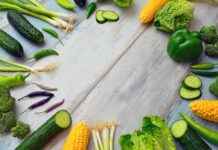This article delves into the ideal chia seed pudding ratios to achieve the perfect texture and flavor, along with tips for customization and variations to suit different preferences. Chia seed pudding is not only a delicious treat but also a nutritious option that can be tailored to fit various dietary needs.
What is the Ideal Chia Seed to Liquid Ratio?
Understanding the best chia seed to liquid ratio is crucial for achieving the desired pudding consistency. The general recommendation is a 1:4 ratio of chia seeds to liquid. This means for every 1 tablespoon of chia seeds, you should use 4 tablespoons of liquid. However, feel free to adjust this ratio based on your texture preference. Some may prefer a thicker pudding, which can be achieved by reducing the liquid slightly.
How to Prepare Chia Seed Pudding?
- Step 1: In a bowl or jar, combine your chia seeds with the chosen liquid.
- Step 2: Stir well to ensure the seeds are evenly distributed.
- Step 3: Let the mixture sit for about 2 hours or overnight in the refrigerator.
- Step 4: Before serving, stir again to break up any clumps that may have formed.
Choosing the Right Liquid for Your Pudding
The choice of liquid can significantly impact the flavor and texture of your pudding. Popular options include:
- Almond Milk: A nutty flavor that pairs well with sweeteners.
- Coconut Milk: Adds a tropical flair and creaminess.
- Fruit Juices: Provide a refreshing twist, though they may alter the consistency.
Nut Milks vs. Dairy Milk: Which is Better?
Nut milks are favored for their creamy texture and health benefits, while dairy milk offers a rich taste. If you have dietary restrictions or prefer plant-based options, nut milks are an excellent choice.
Can You Use Water for Chia Pudding?
While you can use water, it may lead to a less flavorful pudding. To enhance taste, consider adding a sweetener or flavoring agent if water is your chosen liquid.
How Long Should You Let Chia Seeds Soak?
Soaking chia seeds is essential for achieving the right consistency. Typically, allowing them to soak for at least 2 hours or overnight yields the best results, resulting in a thick and creamy pudding.
What Are the Health Benefits of Chia Seed Pudding?
Chia seeds are packed with nutrients, including omega-3 fatty acids, fiber, and protein. These elements contribute to heart health, digestive health, and overall well-being, making chia seed pudding a nutritious addition to your diet.
Are Chia Seeds a Good Source of Fiber?
Yes, chia seeds are an excellent source of dietary fiber, which aids digestion and promotes a feeling of fullness. This makes chia seed pudding a great option for those looking to manage their weight.
Can Chia Seeds Help with Hydration?
Chia seeds can absorb significant amounts of water, which contributes to hydration. This property makes chia seed pudding an ideal choice for post-workout recovery or hot weather.
How to Customize Your Chia Seed Pudding?
Customization is key to enjoying chia seed pudding. You can incorporate:
- Fruits: Berries, bananas, and mangoes add natural sweetness.
- Sweeteners: Honey, maple syrup, or agave can enhance flavor.
- Spices: Cinnamon or vanilla extract can elevate the taste.
Is Chia Seed Pudding Suitable for All Diets?
Chia seed pudding is versatile and can be adapted to various dietary needs, including vegan, gluten-free, and paleo diets. This inclusivity makes it a great option for many individuals.
How to Make Vegan Chia Seed Pudding?
Making vegan chia seed pudding is straightforward. Use plant-based milks and natural sweeteners to create a delicious and cruelty-free dessert or breakfast option.
Can People with Allergies Enjoy Chia Seed Pudding?
Chia seeds are generally safe for those with common allergies, but it’s essential to check for individual sensitivities to other ingredients used in the pudding.
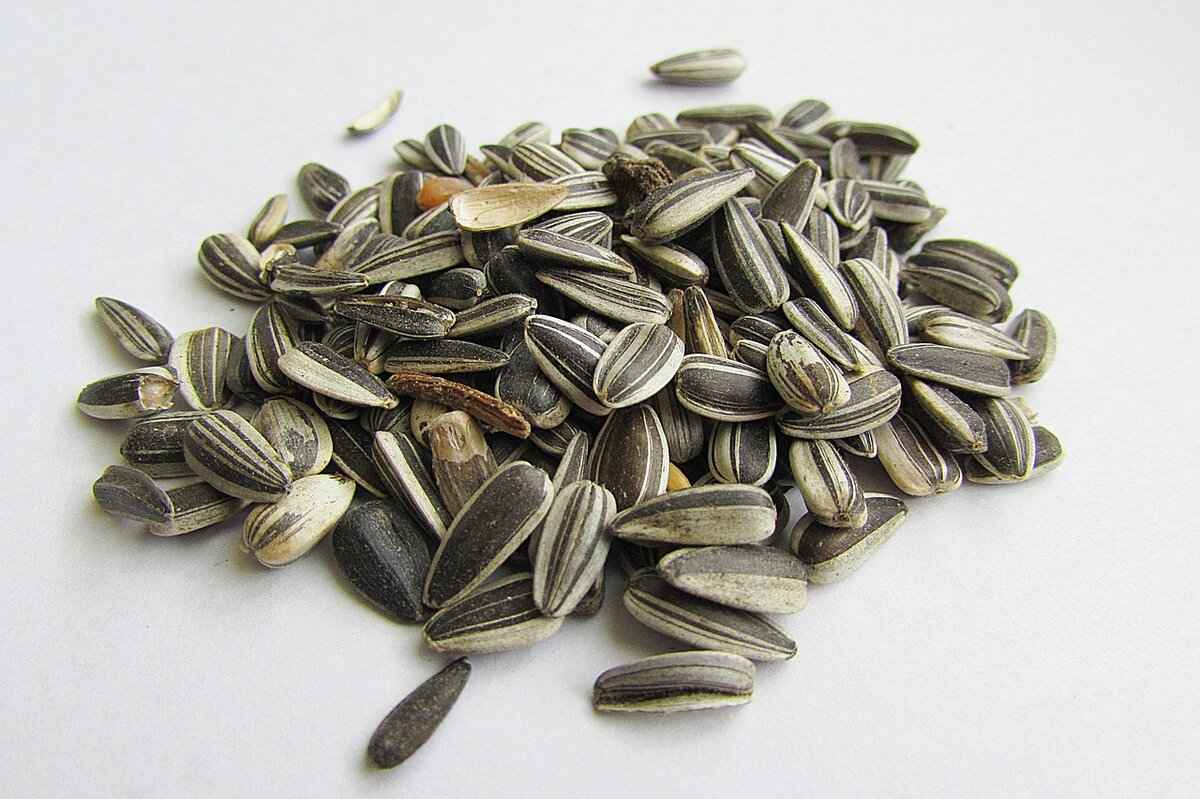
What is the Ideal Chia Seed to Liquid Ratio?
Understanding the perfect chia seed to liquid ratio is essential for creating a delicious and satisfying pudding. The consistency of chia seed pudding can vary greatly depending on the ratio used, making it crucial to find the balance that works best for you.
The commonly recommended ratio for chia seeds to liquid is 1:4, meaning for every 1 tablespoon of chia seeds, you should use 4 tablespoons of liquid. This ratio typically yields a creamy and thick pudding. However, variations exist based on personal preference, dietary needs, and the type of liquid used.
The ratio of chia seeds to liquid is not just a matter of preference; it significantly affects the texture and overall experience of the pudding. If you prefer a thicker pudding, you might want to experiment with a 1:3 ratio. Conversely, if you enjoy a more fluid texture, a 1:5 ratio might be more appealing.
- For Thicker Pudding: Use less liquid. A 1:3 ratio will give you a more gel-like consistency.
- For Creamier Pudding: Stick with the 1:4 ratio, or try adding a bit of nut butter for added creaminess.
- For a Lighter Texture: Increase the liquid to a 1:5 ratio, which will make the pudding less dense.
The type of liquid you choose can greatly influence the flavor and consistency of your chia seed pudding. Here are some popular options:
- Almond Milk: A nutty flavor that pairs well with sweeteners and fruits.
- Coconut Milk: Adds a rich, tropical taste and creamy texture.
- Fruit Juices: Such as orange or apple juice, can add a refreshing twist.
- Water: While it’s an option, it may result in a less flavorful pudding.
Preparing chia seed pudding is straightforward. Start by combining your chosen chia seeds with the liquid in a bowl or jar. Stir well to prevent clumping. After mixing, let the mixture sit for about 10 minutes, then stir again to ensure an even consistency. Finally, cover and refrigerate for at least 2 hours or overnight to allow the chia seeds to absorb the liquid and swell.
Absolutely! One of the joys of making chia seed pudding is the ability to customize it to your liking. Don’t hesitate to try different ratios and liquids until you find your perfect combination. Remember, the key is to enjoy the process and make it your own!
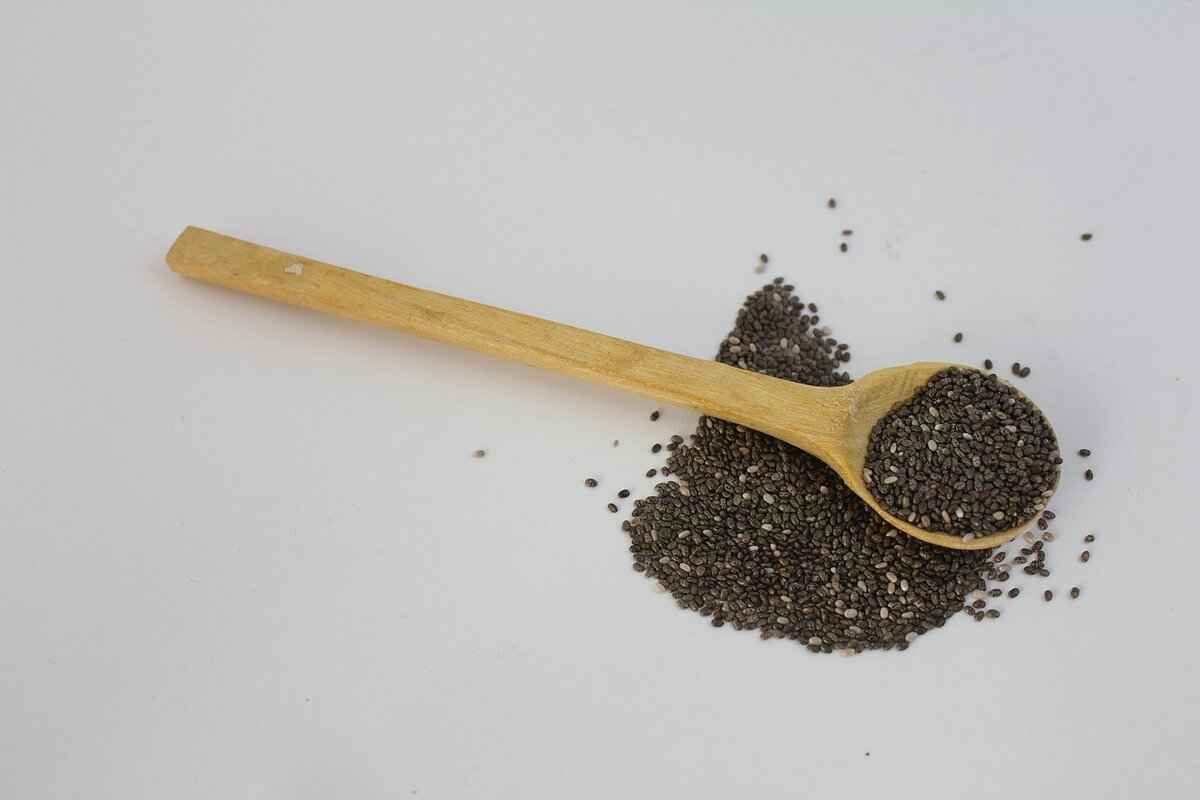
How to Prepare Chia Seed Pudding?
Chia seed pudding is a delightful and nutritious option that has gained popularity for its simplicity and versatility. With just a few ingredients, you can create a satisfying meal or snack that is packed with health benefits. In this section, we will explore the steps to prepare chia seed pudding, ensuring you achieve the perfect consistency and flavor.
Preparing chia seed pudding is simple and requires minimal ingredients. The basic process involves combining chia seeds with your choice of liquid and allowing them to soak, resulting in a creamy and satisfying texture. Here’s how to do it:
- Step 1: Gather Your Ingredients
You will need: - Chia seeds (typically 1/4 cup for a serving)
- Liquid (such as almond milk, coconut milk, or even fruit juice)
- Sweetener (optional, like honey or maple syrup)
- Flavorings (optional, such as vanilla extract or cocoa powder)
- Step 2: Mix the Ingredients
In a bowl or jar, combine the chia seeds with your chosen liquid. A common ratio is 1:4 (one part chia seeds to four parts liquid). Stir well to ensure the seeds are evenly distributed. - Step 3: Let It Soak
Allow the mixture to sit for at least 2 hours or overnight in the refrigerator. This soaking time is crucial as it allows the chia seeds to absorb the liquid and expand, creating a pudding-like consistency. - Step 4: Stir Again
After soaking, give the mixture a good stir. This helps to break up any clumps that may have formed and ensures a smooth texture. - Step 5: Customize Your Pudding
At this point, you can add your favorite toppings or mix-ins, such as fruits, nuts, or seeds. Popular choices include sliced bananas, berries, and a sprinkle of cinnamon. - Step 6: Serve and Enjoy
Your chia seed pudding is now ready to be enjoyed! Serve it in bowls or jars, and it can be stored in the refrigerator for up to five days.
Experimenting with different liquids and flavorings can lead to a variety of delicious outcomes. For instance, using coconut milk will impart a tropical flavor, while almond milk offers a nutty taste. If you’re looking for a sweeter pudding, consider adding a splash of vanilla extract or a drizzle of maple syrup.
Additionally, chia seed pudding is not only easy to prepare but also nutritious. It is rich in omega-3 fatty acids, fiber, and protein, making it a great choice for a healthy diet. Whether you enjoy it for breakfast, as a snack, or a dessert, chia seed pudding can be tailored to fit your dietary needs and preferences.
With these simple steps, you can create a delicious chia seed pudding that satisfies your cravings while providing essential nutrients. Enjoy the process of making this versatile dish and feel free to get creative with your ingredients!
Choosing the Right Liquid for Your Pudding
When it comes to crafting the perfect chia seed pudding, one of the most crucial decisions revolves around the choice of liquid. The liquid you select not only influences the flavor of your pudding but also plays a significant role in its texture. With a variety of options available, you can easily customize your pudding to suit your personal taste and dietary needs.
Here are some popular liquid alternatives to consider:
- Almond Milk: This nut-based milk is a favorite for its creamy consistency and subtle nutty flavor. It’s low in calories and often fortified with vitamins, making it a healthy choice.
- Coconut Milk: For a tropical twist, coconut milk adds a rich, creamy texture along with a hint of sweetness. It’s particularly popular for those following a dairy-free or vegan diet.
- Fruit Juices: Using juices like orange or apple can infuse your pudding with a burst of flavor. However, be mindful of the sugar content in juices, as they can add significant sweetness.
- Oat Milk: This option has gained popularity recently due to its creamy texture and neutral flavor. It’s a great alternative for those with nut allergies.
- Dairy Milk: Traditional cow’s milk provides a rich taste and creamy texture, making it a classic choice for pudding lovers who are not lactose intolerant.
Each liquid brings its unique characteristics to chia seed pudding:
- Almond Milk: Offers a light and nutty flavor, making it ideal for those who prefer a less intense taste.
- Coconut Milk: Adds a rich, velvety texture and a sweet, tropical flavor, perfect for enhancing the overall indulgence of the pudding.
- Fruit Juices: Provides a refreshing and fruity taste but can lead to a thinner consistency if not balanced with other ingredients.
- Oat Milk: Known for its smooth texture, it complements the chia seeds well and creates a satisfying pudding.
- Dairy Milk: Delivers a classic pudding experience with a rich and creamy mouthfeel.
While it’s technically possible to use water as the liquid for your chia pudding, it is not recommended. Water lacks flavor, which can lead to a bland pudding. If you choose to go this route, consider enhancing the taste by adding natural sweeteners like honey or maple syrup, or incorporating spices like cinnamon or vanilla extract.
Don’t hesitate to experiment with different liquids to find the combination that suits your palate. You can even mix and match! For instance, combining almond milk with a splash of coconut milk can yield a delightful balance of flavors and textures. Remember, the key is to achieve a consistency that is thick yet creamy, allowing the chia seeds to do their magic.
Ultimately, the choice of liquid is a personal one. By understanding the unique properties of each option, you can create a chia seed pudding that is not only delicious but also tailored to your dietary preferences and flavor cravings.
Nut Milks vs. Dairy Milk: Which is Better?
When it comes to choosing the right milk for your dietary needs, the debate between nut milks and dairy milk is more relevant than ever. With the rise of plant-based diets and the increasing awareness of lactose intolerance, many individuals are exploring alternatives to traditional dairy. This article delves into the differences, benefits, and considerations surrounding nut milks and dairy milk, helping you make an informed choice.
Nut milks are plant-based beverages made from ground nuts and water. Common varieties include almond milk, cashew milk, and hazelnut milk. These milks are often fortified with vitamins and minerals, making them a nutritious option for many. Nut milks are typically lower in calories and fat compared to dairy milk, which can be appealing for those watching their weight.
- Lactose-Free: Nut milks are naturally lactose-free, making them suitable for individuals with lactose intolerance.
- Heart-Healthy: Many nut milks contain monounsaturated fats, which are beneficial for heart health.
- Rich in Vitamins: Fortified nut milks can provide essential nutrients such as calcium and vitamin D.
Dairy milk is a nutrient-rich beverage derived from cows, providing a creamy texture and rich flavor. It is a good source of calcium, vitamin D, and protein. However, it is not suitable for those with lactose intolerance or dairy allergies.
- High in Protein: Dairy milk is an excellent source of protein, essential for muscle growth and repair.
- Bone Health: The calcium and vitamin D in dairy milk support strong bones and teeth.
- Rich Flavor: Dairy milk offers a creamy taste that many people enjoy in coffee, cereals, and cooking.
When it comes to flavor and texture, nut milks and dairy milk offer distinct experiences. Nut milks tend to have a lighter, sometimes nuttier flavor, while dairy milk is known for its rich, creamy consistency. Depending on your personal preferences, one may be more appealing than the other.
When deciding between nut milks and dairy milk, consider the following factors:
- Dietary Restrictions: If you are lactose intolerant or allergic to dairy, nut milks are a viable alternative.
- Flavor Preferences: If you enjoy the rich taste of dairy, you might prefer it over nut milks.
- Nutritional Needs: Assess your dietary needs, especially if you require higher protein or calcium intake.
Both nut milks and dairy milk can be integrated into your diet in various ways. Use them in smoothies, coffee, baking, or as a base for sauces. Experimenting with different types can help you find the perfect fit for your taste and nutritional needs.
While both options have their advantages, there are some downsides to consider. Nut milks can sometimes contain added sugars and preservatives, so it’s essential to read labels carefully. On the other hand, dairy milk may not be suitable for everyone due to lactose intolerance or allergies.
Ultimately, the choice between nut milks and dairy milk comes down to personal preference, dietary restrictions, and nutritional needs. Both options can be part of a healthy diet, so choose what works best for you!
Can You Use Water for Chia Pudding?
Chia seed pudding is a delightful and nutritious treat that has gained popularity for its versatility and health benefits. One common question that arises when preparing this dish is whether water can be used as a liquid base. While using water is indeed an option, it’s essential to understand the implications it has on the overall flavor and texture of the pudding.
When you choose water as your liquid for chia pudding, you may notice that the resulting pudding is less rich and flavorful compared to those made with alternatives like almond milk or coconut milk. Water provides hydration but lacks the natural sweetness and creaminess that other liquids offer. This can lead to a pudding that feels more like a basic gel rather than a satisfying dessert.
If you decide to use water, consider adding a sweetener or flavoring agent to enhance the taste. Here are some popular options:
- Honey – A natural sweetener that can add depth to your pudding.
- Maple Syrup – Provides a unique flavor profile and sweetness.
- Agave Nectar – A low-glycemic option that blends well.
- Vanilla Extract – A few drops can elevate the overall taste.
- Cocoa Powder – For chocolate lovers, this adds richness.
By incorporating these ingredients, you can significantly improve the taste of your chia pudding made with water.
Regardless of the liquid used, the soaking time for chia seeds is crucial. Typically, allowing the seeds to soak for at least 2 hours or overnight is recommended. This soaking process not only helps the seeds absorb the liquid but also enhances their ability to thicken the pudding, creating a more enjoyable texture.
For those looking to maximize flavor and texture, consider using alternatives to water. Nut milks, such as almond or cashew milk, offer a creamy base that complements the chia seeds beautifully. Coconut milk adds a tropical flair, while fruit juices can provide a refreshing twist. Each of these options brings its own unique flavor profile, making your chia pudding a delightful treat.
In summary, while using water for chia pudding is feasible, it may not yield the most flavorful results. To enhance the overall experience, adding sweeteners or flavoring agents is highly recommended. If you aim for a pudding that is rich, creamy, and satisfying, exploring other liquid options will likely lead to a more enjoyable outcome. Experimenting with different combinations can help you discover the perfect balance that suits your taste preferences.
How Long Should You Let Chia Seeds Soak?
When it comes to making chia seed pudding, one of the most important factors to consider is the soaking time for chia seeds. This step is crucial for achieving the right consistency and texture, which can make or break your pudding experience. So, how long should you let chia seeds soak? The general recommendation is to allow them to soak for at least 2 hours, but for optimal results, soaking them overnight is often the best choice.
Soaking chia seeds is essential because it allows them to absorb liquid and expand, creating a gel-like consistency. This transformation is what gives chia seed pudding its unique texture. If you don’t soak them long enough, the seeds may remain crunchy, which can be unappetizing for many. On the other hand, allowing them to soak for too long can lead to a pudding that is overly thick and less enjoyable.
- Absorption: Chia seeds can absorb up to 12 times their weight in liquid. This property is what makes them so effective in creating a thick pudding.
- Gel Formation: The soluble fiber in chia seeds forms a gel when mixed with liquid, which is essential for the pudding’s creamy texture.
- Nutrient Activation: Soaking also helps to activate some of the nutrients in chia seeds, making them easier for your body to digest and absorb.
To achieve the perfect pudding consistency, follow these simple steps:
- Measure out your chia seeds. A common ratio is 1 part chia seeds to 4 parts liquid.
- Combine the chia seeds with your chosen liquid in a bowl or jar. Popular options include almond milk, coconut milk, or even fruit juice.
- Stir the mixture well to ensure that the chia seeds are evenly distributed throughout the liquid.
- Cover the bowl or jar and place it in the refrigerator.
- Allow the mixture to soak for at least 2 hours, or ideally, overnight for the best results.
While soaking chia seeds overnight is generally safe and often recommended, it is possible to soak them for too long. If left for more than 24 hours, the pudding may become excessively thick and gelatinous, which might not be appealing. Therefore, it’s best to consume your chia seed pudding within a few days of preparation.
- Experiment with Ratios: Depending on your texture preference, you can adjust the chia seed to liquid ratio. A 1:4 ratio is standard, but some may prefer a thicker or thinner pudding.
- Add Flavor: Enhance your chia seed pudding by adding sweeteners, vanilla extract, or spices like cinnamon before soaking.
- Mix Well: Stir the mixture again after soaking for a few minutes to break up any clumps that may have formed.
In summary, the soaking time for chia seeds is a critical factor in achieving the desired pudding consistency. With a minimum of 2 hours and preferably overnight soaking, you can create a delicious and nutritious chia seed pudding that is both satisfying and versatile.

What Are the Health Benefits of Chia Seed Pudding?
Chia seeds have gained immense popularity in recent years, especially with the rise of health-conscious eating. These tiny seeds are not just a trendy superfood; they are also a powerhouse of nutrients that can significantly enhance your overall well-being. Understanding the health benefits of chia seed pudding can motivate you to incorporate this nutritious dish into your diet regularly.
Chia seeds are packed with essential nutrients, including omega-3 fatty acids, fiber, and protein. These components contribute to a variety of health benefits, making chia seed pudding a smart addition to your meals.
- Rich in Omega-3 Fatty Acids: Chia seeds are one of the best plant-based sources of omega-3 fatty acids, which are crucial for heart health. Omega-3s can help reduce inflammation and lower the risk of chronic diseases.
- High in Fiber: With approximately 11 grams of fiber per ounce, chia seeds promote digestive health. The fiber content aids in maintaining regular bowel movements and can help you feel fuller for longer, making it an excellent choice for weight management.
- Good Source of Protein: Chia seeds contain about 4 grams of protein per ounce, which is beneficial for muscle repair and growth. This makes chia seed pudding a great post-workout snack.
- Supports Hydration: Chia seeds can absorb up to 12 times their weight in water, making chia seed pudding an excellent option for hydration. This property is particularly beneficial for athletes or those living in hot climates.
Yes, chia seeds are an exceptional source of dietary fiber. The high fiber content not only aids digestion but also helps regulate blood sugar levels. This can be particularly beneficial for individuals with diabetes, as it can help prevent spikes in blood sugar after meals.
Indeed, chia seeds can significantly contribute to hydration. When soaked in liquid, they expand and form a gel-like consistency, which can help retain moisture in your body. This makes chia seed pudding an ideal choice for post-workout recovery or during hot weather.
Chia seed pudding is not just about fiber and omega-3s. It also contains a variety of vitamins and minerals, including:
- Calcium: Essential for bone health.
- Magnesium: Supports muscle function and energy production.
- Iron: Important for oxygen transport in the blood.
- Antioxidants: Help combat oxidative stress and inflammation.
Yes, chia seed pudding is incredibly versatile and can be tailored to fit various dietary needs, including vegan, gluten-free, and paleo diets. This inclusivity makes it an excellent option for a wide range of individuals.
Incorporating chia seed pudding into your diet can be an easy and delicious way to boost your nutrient intake. By understanding its health benefits, you can make informed choices that support your health goals.
Are Chia Seeds a Good Source of Fiber?
Chia seeds have gained popularity in recent years, not just for their unique texture but also for their impressive nutritional profile. One of the standout features of chia seeds is their high content of dietary fiber, which plays a crucial role in maintaining digestive health and promoting overall well-being.
Chia seeds are composed of approximately 34% fiber, making them one of the richest sources of fiber available. This high fiber content is primarily made up of soluble fiber, which dissolves in water to form a gel-like substance. This gel formation is essential for several reasons:
- Aids Digestion: The soluble fiber in chia seeds helps regulate bowel movements and promotes a healthy digestive tract.
- Enhances Satiety: By absorbing water and expanding in the stomach, chia seeds create a feeling of fullness, which can reduce overall calorie intake.
- Stabilizes Blood Sugar: The slow digestion of fiber helps maintain steady blood sugar levels, preventing spikes and crashes that can lead to cravings.
When comparing chia seeds to other fiber-rich foods such as oats, flaxseeds, and legumes, they hold their own quite well. For instance, a 28-gram serving of chia seeds provides around 11 grams of fiber, while the same serving of oats contains about 4 grams. This makes chia seeds an efficient way to boost fiber intake, especially for those looking to manage their weight or improve their digestive health.
Yes, the fiber content in chia seeds can significantly aid in weight management. By promoting a feeling of fullness, chia seed pudding and other chia-based recipes can help control hunger cravings. This leads to fewer snacks and smaller portion sizes during meals. Incorporating chia seeds into your diet can be a simple yet effective strategy for those looking to achieve or maintain a healthy weight.
Incorporating chia seeds into your daily routine is easy and versatile. Here are some practical ways to enjoy their benefits:
- Chia Seed Pudding: Mix chia seeds with your choice of liquid (such as almond milk or coconut milk) and let them soak overnight for a delicious breakfast or snack.
- Smoothies: Add a tablespoon of chia seeds to your smoothies for an extra fiber boost.
- Baking: Substitute chia seeds for eggs in baking recipes by mixing them with water to create a gel-like consistency.
While chia seeds are generally safe for most people, it’s essential to consume them with adequate water. Due to their ability to absorb liquid, eating dry chia seeds without sufficient hydration can lead to digestive discomfort. Additionally, individuals with certain medical conditions or those on specific medications should consult a healthcare provider before making significant dietary changes.
In summary, chia seeds are an exceptional source of dietary fiber, offering numerous health benefits that can enhance digestion, promote satiety, and assist in weight management. By incorporating chia seeds into your meals, you can enjoy a delicious and nutritious addition to your diet that supports overall health.
Can Chia Seeds Help with Hydration?
Chia seeds have gained popularity in recent years, not only for their nutritional benefits but also for their unique ability to assist with hydration. This property makes them particularly appealing for those engaging in physical activities or living in hot climates. In this section, we will explore how chia seeds contribute to hydration and why they are an excellent addition to your diet.
Chia seeds can absorb up to 12 times their weight in water. This remarkable ability is due to the soluble fiber present in the seeds, which forms a gel-like consistency when mixed with liquid. When consumed, this gel not only helps to keep you hydrated but also aids in digestion, making chia seeds a dual-purpose food.
Staying hydrated is crucial for maintaining optimal bodily functions, especially during physical exertion. Dehydration can lead to fatigue, decreased performance, and even heat-related illnesses. In addition to water, the body requires electrolytes to regulate nerve and muscle function. Chia seeds are not only hydrating but also contain essential minerals like calcium, magnesium, and potassium, which support electrolyte balance.
One of the best ways to enjoy the hydrating benefits of chia seeds is through chia seed pudding. By combining chia seeds with your choice of liquid, such as almond milk or coconut water, you create a delicious and nutritious meal that can be consumed any time of the day. Here’s a simple recipe to get you started:
Ingredients:- 1/4 cup chia seeds- 1 cup liquid (almond milk, coconut water, etc.)- Sweetener (optional)- Toppings (fruits, nuts, etc.)Instructions:1. In a bowl, mix chia seeds and liquid.2. Stir well to prevent clumping.3. Let it sit for at least 2 hours or overnight in the fridge.4. Add sweeteners and toppings before serving.
Chia seed pudding is particularly beneficial post-workout or during hot weather. After exercising, your body needs to replenish lost fluids and nutrients. Consuming chia pudding can help you achieve this while providing a sustained release of energy due to its fiber content. Additionally, on hot days, enjoying a chilled chia seed pudding can be a refreshing way to stay hydrated.
Absolutely! Chia seeds can be added to smoothies, juices, or even salads to boost hydration. Here are a few ideas:
- Chia Smoothie: Blend chia seeds with your favorite fruits and a liquid of your choice for a hydrating drink.
- Chia-Infused Water: Soak chia seeds in water overnight and drink it for a nutrient-rich hydration option.
- Chia Salad Dressing: Incorporate chia seeds into salad dressings for added texture and hydration.
While chia seeds are generally safe for most individuals, it’s important to consume them with adequate liquid to avoid any digestive discomfort. Start with small amounts and gradually increase your intake. Additionally, if you have any pre-existing health conditions or concerns, consult with a healthcare professional before making significant dietary changes.
In summary, chia seeds are a fantastic source of hydration, making them an excellent choice for anyone looking to improve their overall health and wellness. By incorporating chia seeds into your diet, you can enjoy their numerous benefits while ensuring that you stay properly hydrated.
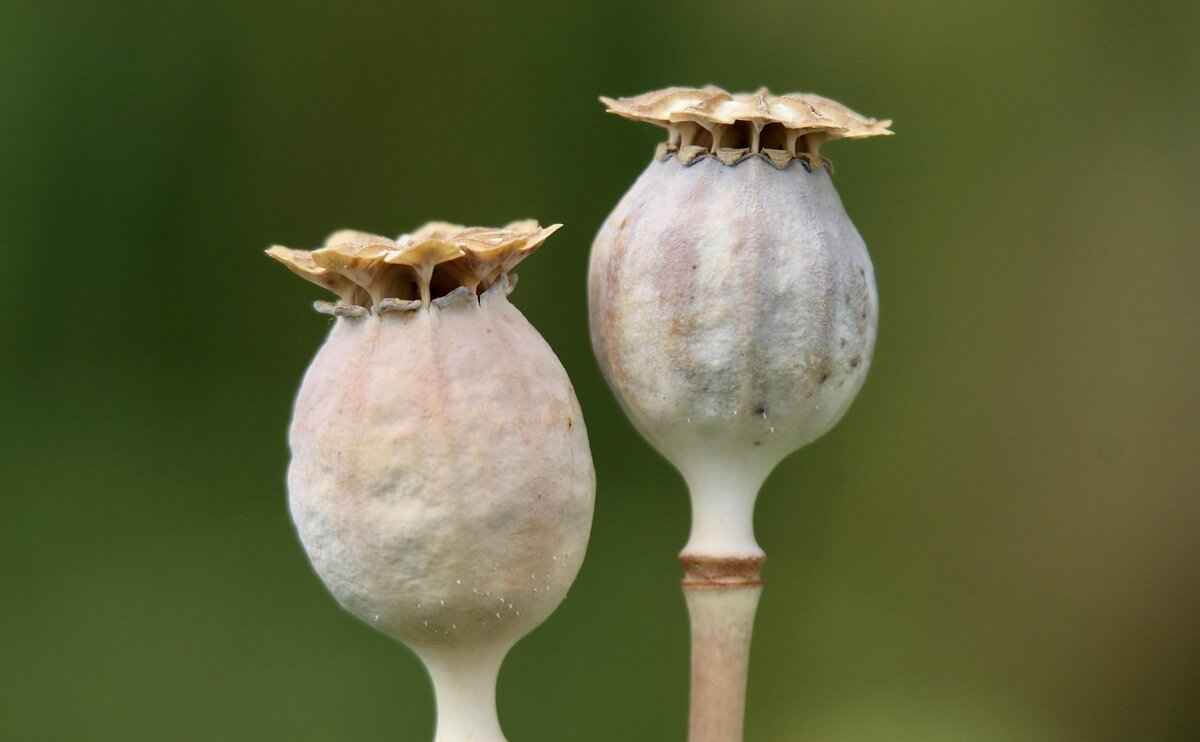
How to Customize Your Chia Seed Pudding?
Chia seed pudding is not only a nutritious option but also a versatile canvas for creativity in the kitchen. The ability to customize your chia seed pudding allows you to cater to your personal taste preferences, dietary needs, and even seasonal ingredients. Let’s explore how you can transform this simple dish into a delightful treat that suits your unique flavor profile.
Customization is key to enjoying chia seed pudding. By incorporating various fruits, nuts, sweeteners, and spices, you can create a pudding that not only satisfies your taste buds but also aligns with your nutritional goals. This flexibility makes chia pudding a favorite among health enthusiasts and foodies alike.
Fruits are a fantastic addition to chia seed pudding, providing natural sweetness and essential vitamins. Here are some popular options:
- Berries: Strawberries, blueberries, and raspberries add vibrant color and antioxidants.
- Bananas: Sliced bananas offer creaminess and a rich flavor.
- Mango: This tropical fruit brings a unique sweetness and a hint of exotic flair.
- Pineapple: For a refreshing twist, pineapple adds a zesty kick.
Incorporating nuts and seeds not only enhances the texture but also boosts the nutritional value of your pudding. Consider adding:
- Almonds: Chopped almonds add a crunchy texture and healthy fats.
- Walnuts: These provide omega-3 fatty acids and a rich flavor.
- Sunflower seeds: Great for a protein boost and a nut-free option.
Sweeteners can elevate the taste of your chia seed pudding. Here are some popular choices:
- Honey: A natural sweetener that adds a floral note.
- Maple syrup: Offers a rich, caramel-like flavor.
- Agave nectar: A vegan-friendly option that dissolves easily.
Spices can add depth and complexity to your chia pudding. Experiment with:
- Cinnamon: Adds warmth and a hint of sweetness.
- Vanilla extract: Provides a classic flavor that pairs well with almost any ingredient.
- Cocoa powder: For chocolate lovers, this adds richness and a decadent touch.
Layering your chia pudding with different flavors and textures can make it visually appealing and exciting to eat. Try alternating layers of flavored chia pudding with fruits, yogurt, or granola. This not only enhances the presentation but also allows for a variety of flavors in each bite.
To turn your chia seed pudding into a more substantial meal, consider adding protein sources such as:
- Greek yogurt: Adds creaminess and protein.
- Protein powder: A quick way to boost the protein content.
By customizing your chia seed pudding, you can create a dish that is not only nutritious but also a delightful culinary experience. The possibilities are endless, and with a little creativity, each serving can be unique and satisfying.
What Fruits Pair Well with Chia Seed Pudding?
Chia seed pudding is a delightful and nutritious dish that can be easily customized to suit individual tastes. One of the most exciting aspects of this dish is the variety of fruits that can be added to enhance its flavor and nutritional profile. Fruits such as berries, bananas, and mangoes not only complement chia seed pudding wonderfully but also bring a burst of natural sweetness and essential nutrients.
Incorporating fruits into your chia seed pudding serves multiple purposes. Firstly, fruits are a natural source of sweetness, allowing you to reduce or eliminate added sugars. Secondly, they provide additional vitamins, minerals, and antioxidants, which are crucial for overall health. For instance, berries are rich in antioxidants that can help combat oxidative stress, while bananas offer a good dose of potassium.
- Berries: Strawberries, blueberries, raspberries, and blackberries are all excellent choices. Their tartness balances the creaminess of the pudding, and they are packed with vitamins and fiber.
- Bananas: Sliced bananas add a creamy texture and natural sweetness. They are also a great source of potassium, which is vital for heart health.
- Mangoes: The tropical flavor of mangoes can elevate your chia pudding to a whole new level. They are rich in vitamins A and C, promoting skin health.
- Peaches: Fresh or grilled peaches can add a unique sweetness and juiciness to your pudding, making it a refreshing treat.
- Apples: Chopped apples bring a satisfying crunch and a hint of sweetness. They are also high in fiber, which is beneficial for digestion.
Experimenting with fruit combinations can lead to exciting new flavors. For instance, try mixing berries with bananas for a vibrant, nutrient-packed pudding. Alternatively, a blend of mango and coconut milk can create a tropical-inspired dish that feels like a vacation in a bowl.
To prepare your chia seed pudding with fruits, follow these simple steps:
- In a bowl, combine your chia seeds with your chosen liquid (like almond milk or coconut milk) in a 1:4 ratio.
- Add a sweetener if desired, such as honey or maple syrup.
- Let the mixture sit for at least 2 hours or overnight in the refrigerator.
- Before serving, fold in your choice of fruits and enjoy!
While adding fruits to your chia seed pudding is generally beneficial, it’s important to consider the sugar content of certain fruits, especially if you are monitoring your sugar intake. Opting for lower-sugar fruits like berries can help maintain a balanced diet.
In summary, fruits play a vital role in enhancing the flavor, texture, and nutritional value of chia seed pudding. By choosing a variety of fruits, you can create a delicious and healthy treat that caters to your taste preferences while reaping the many health benefits that chia seeds and fruits have to offer.
Can You Add Sweeteners or Flavorings?
When it comes to enhancing the flavor of your chia seed pudding, the addition of sweeteners and flavorings can make all the difference. Not only do they elevate the taste, but they also allow for a personalized touch that can cater to various preferences and dietary needs. In this section, we will explore the benefits of adding sweeteners like honey, maple syrup, or agave, as well as experimenting with flavorings such as vanilla and cocoa powder.
Sweeteners are essential for those who prefer a richer taste in their pudding. Natural sweeteners like honey, maple syrup, and agave nectar not only add sweetness but also bring their unique flavors to the mix. For instance:
- Honey: A classic choice, honey adds a floral note and is packed with antioxidants.
- Maple Syrup: This sweetener provides a robust flavor profile that can enhance the overall taste of the pudding.
- Agave Nectar: Known for its low glycemic index, agave is a great option for those monitoring their sugar intake.
In addition to sweeteners, flavorings can transform your chia seed pudding into a gourmet experience. Here are some popular options:
- Vanilla Extract: A few drops can add a warm, comforting flavor that pairs beautifully with almost any sweetener.
- Cocoa Powder: For chocolate lovers, incorporating cocoa powder can create a deliciously rich dessert.
- Cinnamon or Nutmeg: These spices can add warmth and complexity to your pudding, making it perfect for seasonal variations.
One of the best aspects of chia seed pudding is its versatility. You can mix and match sweeteners and flavorings to find your perfect combination. For example, a mix of honey and vanilla can create a delightful base, while adding cocoa powder can turn it into a chocolate treat. Don’t hesitate to try out different ratios and combinations until you discover what you love most.
When adding sweeteners and flavorings, it’s essential to strike a balance. Here are some tips:
- Start Small: Begin with a small amount of sweetener and gradually increase it to your taste preference.
- Consider the Liquid Base: The type of liquid you use can influence the overall sweetness. For instance, almond milk may require less sweetener than coconut milk.
- Let It Sit: Allowing the pudding to sit for a few hours or overnight can help the flavors meld together, enhancing the overall taste.
By experimenting with different sweeteners and flavorings, you can create a chia seed pudding that is not only healthy but also incredibly delicious. Whether you prefer a simple vanilla pudding or a decadent chocolate delight, the possibilities are endless. So go ahead, unleash your creativity, and enjoy the journey of flavor exploration!
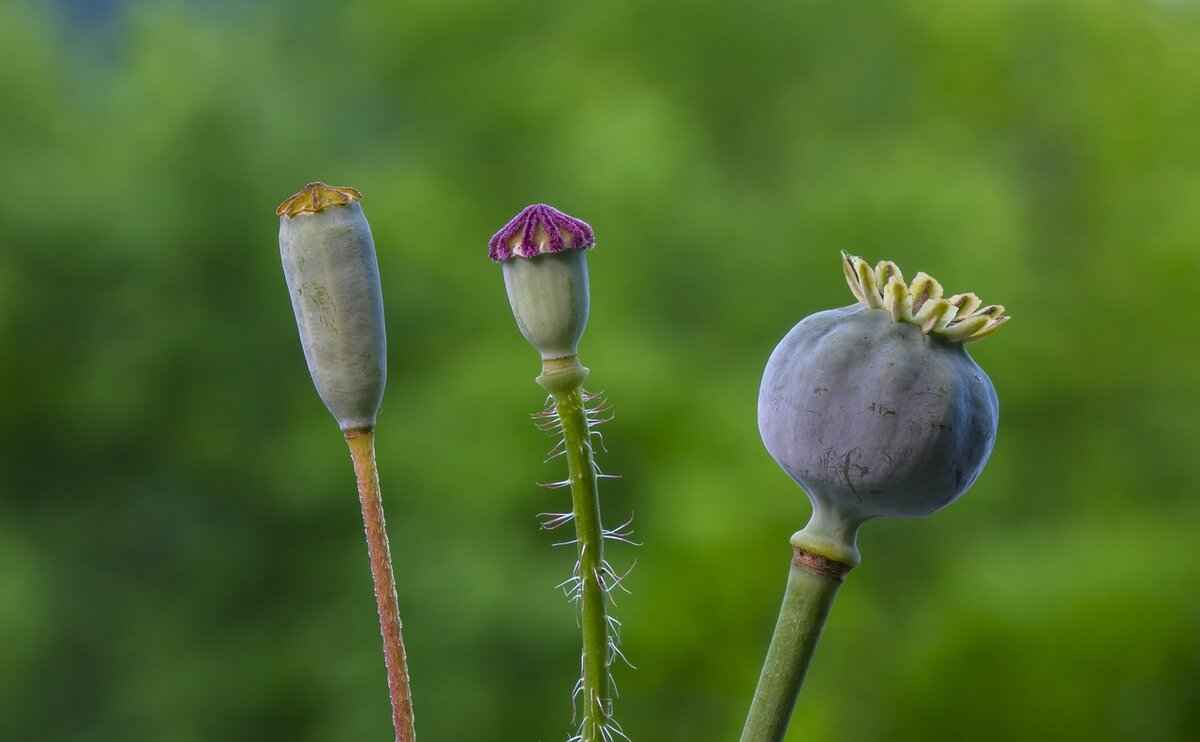
Is Chia Seed Pudding Suitable for All Diets?
Chia seed pudding has gained immense popularity in recent years, not just for its delightful taste but also for its remarkable versatility. This nutritious dish can easily cater to various dietary preferences and restrictions, making it an excellent choice for many individuals. In this article, we will explore how chia seed pudding can fit into different diets, including vegan, gluten-free, and paleo, and why it is considered an inclusive food option.
For those following a vegan diet, chia seed pudding is an ideal choice. The primary ingredient, chia seeds, are plant-based and rich in essential nutrients. To prepare a vegan version, simply combine chia seeds with any plant-based milk such as almond, soy, or coconut milk. This allows vegans to enjoy a delicious and creamy pudding without compromising their dietary choices. Additionally, natural sweeteners like maple syrup or agave nectar can be used to enhance the flavor without using animal products.
Absolutely! Chia seeds are naturally gluten-free, making chia seed pudding a safe option for those with gluten sensitivities or celiac disease. When preparing chia seed pudding, ensure that any added ingredients, such as flavorings or sweeteners, are also gluten-free. Using gluten-free toppings like fresh fruits, nuts, or seeds can further enhance the dish while keeping it safe for gluten-sensitive individuals.
Chia seed pudding aligns well with a paleo diet as it consists of whole, unprocessed ingredients. The pudding can be made using coconut milk and natural sweeteners like honey, which are both acceptable in paleo nutrition. This makes chia seed pudding a nutritious and satisfying option for those following a paleo lifestyle, providing a good source of omega-3 fatty acids and fiber.
One of the best aspects of chia seed pudding is its customizability. Here are some ideas for various dietary needs:
- Vegan: Use almond or oat milk, and sweeten with maple syrup.
- Gluten-Free: Top with gluten-free granola or fresh fruits.
- Paleo: Incorporate coconut milk and sweeten with raw honey.
While chia seeds are generally safe for most people, it is important to consider potential allergies to other ingredients used in the pudding. For example, those with nut allergies should avoid nut milks and opt for alternatives like oat or rice milk. Always check labels to ensure that all ingredients are safe for your specific dietary needs.
The adaptability of chia seed pudding to various dietary restrictions makes it an inclusive food choice. Whether you are vegan, gluten-free, paleo, or simply looking for a nutritious snack, chia seed pudding can be tailored to meet your needs. This versatility not only allows individuals to enjoy a delicious treat but also encourages a diverse range of people to experience the health benefits associated with chia seeds.
In conclusion, chia seed pudding is a fantastic option for anyone looking to incorporate a healthy, versatile dish into their diet. Whether you are vegan, gluten-free, or following a paleo lifestyle, this pudding can be easily customized to fit your needs, making it a truly inclusive food choice.
How to Make Vegan Chia Seed Pudding?
Making vegan chia seed pudding is not only straightforward but also a delightful way to enjoy a healthy dessert or breakfast. With just a few ingredients, you can create a creamy, nutritious dish that is both satisfying and versatile. Below, we will delve into the steps for preparing this delicious pudding, exploring the best ingredients and methods to achieve the perfect texture and flavor.
The foundation of a great chia seed pudding lies in the right chia seed to liquid ratio. A common recommendation is to use a 1:4 ratio, meaning one part chia seeds to four parts liquid. This ratio ensures that the pudding thickens adequately while maintaining a smooth texture.
When making vegan chia seed pudding, the choice of liquid is crucial. Here are some popular options:
- Almond Milk: A creamy and slightly nutty flavor.
- Coconut Milk: Adds a rich and tropical taste.
- Oat Milk: Provides a mild flavor and smooth texture.
- Fruit Juices: For a fruity twist, consider using juices like orange or apple.
Additionally, using natural sweeteners such as maple syrup, agave nectar, or coconut sugar can enhance the flavor without compromising the vegan aspect.
Preparing chia seed pudding is simple:
- Combine Ingredients: In a bowl or jar, mix together 1/4 cup of chia seeds with 1 cup of your chosen plant-based milk. Add your preferred sweetener to taste.
- Mix Well: Stir the mixture thoroughly to prevent clumping. Ensure that the chia seeds are evenly distributed.
- Let it Soak: Cover the bowl or jar and place it in the refrigerator. Let it soak for at least 2 hours, although overnight is ideal for a thicker consistency.
- Stir Again: After soaking, give the pudding a good stir. If it’s too thick, add a splash more of your liquid to reach your desired consistency.
One of the best features of chia seed pudding is its versatility. You can easily customize it to suit your taste preferences. Consider adding:
- Fruits: Fresh berries, sliced bananas, or diced mangoes can enhance both flavor and nutrition.
- Nuts and Seeds: Toppings like almonds, walnuts, or pumpkin seeds add crunch and additional health benefits.
- Spices: A dash of cinnamon or vanilla extract can elevate the flavor profile.
Chia seeds are packed with nutrients, making them an excellent addition to your diet. They are rich in omega-3 fatty acids, fiber, and protein, contributing to overall health. This pudding can aid in digestion, promote satiety, and even help with hydration, as chia seeds can absorb significant amounts of liquid.
Yes! Vegan chia seed pudding is suitable for various dietary preferences, including gluten-free, paleo, and vegan diets. However, it’s important to check for individual sensitivities to other ingredients, especially if adding toppings or sweeteners.
In summary, making vegan chia seed pudding is a simple and rewarding process. With the right ingredients and a little creativity, you can enjoy a nutritious and delicious dish that fits perfectly into any meal plan.
Can People with Allergies Enjoy Chia Seed Pudding?
Chia seed pudding has gained popularity as a nutritious and versatile snack or meal option. However, for those with food allergies, it’s crucial to understand whether this delightful treat is safe to consume. In this section, we will explore the safety of chia seeds for individuals with common allergies and the importance of being mindful of additional ingredients used in the pudding.
Chia seeds are generally regarded as safe for most individuals, including those with common allergies. They are gluten-free, nut-free, and do not contain dairy, making them a suitable choice for many with specific dietary restrictions. However, it’s essential to recognize that individual sensitivities can vary. While chia seeds themselves are not a common allergen, some people may experience reactions due to cross-contamination or personal sensitivities.
When purchasing chia seeds, it’s vital to consider the risk of cross-contamination. Many products are processed in facilities that handle nuts, soy, or gluten, which can pose a risk for individuals with severe allergies. Always check the packaging for allergen warnings and choose brands that prioritize allergen-free processing.
Chia seed pudding is typically made with just chia seeds and a liquid, such as almond milk or coconut milk. However, many recipes call for additional ingredients like sweeteners, flavorings, or toppings. These can introduce allergens into the mix. Common additions include:
- Nuts: Almonds or walnuts can add texture but are not suitable for nut allergy sufferers.
- Dairy: Some recipes may use dairy milk or yogurt, which is not safe for those with lactose intolerance or dairy allergies.
- Sweeteners: Honey, agave, or maple syrup may not be suitable for everyone, particularly those with specific dietary restrictions.
To make chia seed pudding safe for individuals with allergies, consider the following tips:
- Choose Safe Liquids: Opt for plant-based milks like oat milk or rice milk if nut allergies are a concern.
- Read Labels Carefully: Always check ingredient labels for potential allergens.
- Make Your Own Pudding: Preparing chia seed pudding at home allows you to control all ingredients, ensuring they meet your dietary needs.
If you have a history of food allergies or sensitivities, it’s always wise to consult with a healthcare professional or a registered dietitian before introducing new foods into your diet. They can provide personalized advice based on your health history and dietary needs.
In summary, while chia seeds are generally safe for those with common allergies, it’s crucial to be aware of individual sensitivities and the ingredients used in chia seed pudding. By taking precautions and being mindful of your choices, you can enjoy this nutritious treat without worry.
Frequently Asked Questions
- What is the best chia seed to liquid ratio for pudding?
The ideal ratio is typically 1:4, meaning 1 part chia seeds to 4 parts liquid. However, feel free to adjust this based on your texture preference!
- How long should I let chia seeds soak?
For the best consistency, let your chia seeds soak for at least 2 hours. Overnight soaking is even better for that perfect pudding texture!
- Can I use water as a liquid for chia pudding?
Yes, you can use water, but keep in mind that it may result in a less flavorful pudding. Consider adding a sweetener or flavoring for a tastier treat!
- Are chia seeds a good source of fiber?
Absolutely! Chia seeds are packed with dietary fiber, which aids digestion and helps keep you feeling full. They’re a fantastic addition to any diet!
- How can I customize my chia seed pudding?
You can add fruits, nuts, sweeteners, and spices to create your own unique flavor. Experimenting is part of the fun!
- Is chia seed pudding suitable for vegans?
Yes, chia seed pudding is vegan-friendly! Just use plant-based milks and natural sweeteners to make it delicious and cruelty-free.


